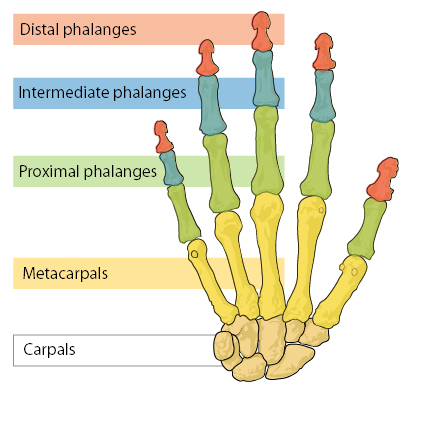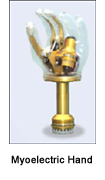
Transcarpal Amputation: Overcoming Surprising Disadvantages

The human hand is composed of the wrist bones (carpals), the mid hand bones (metacarpals), and the fingers (phalanges). Transcarpal amputation is hand amputation through the wrist bones.
When discussing any limb amputation, many people would believe it’s best to amputate the least amount possible. Long residual limbs provide a better lever, and the amputee retains more natural function. True, with transcarpal amputation, supination and pronation (rotation of the forearm), as well as flexion and extension (bending and straightening of the wrist), is still possible. The longer lever arm does preserve more of the amputee’s natural movement and strength, but prosthetic designs for this type of amputation may be limited.
Myoelectrics

Prosthetic components take up space. The less space there is to fit the prosthetic component, the more limited the prosthetist is in prosthetic design options. Myoelectrics are often considered the most functional prosthetic design because they have inherent advantages, such as:
· Less harnessing
· Better articulation
· Help maintain good muscle tone
· Do not require exaggerated body movements to operate
Despite the obvious advantage in myoelectric design, myoelectric components can be heavy and the motors and controls take up space: space that a transcarpal amputee may not have. The result in trying to accommodate this space may be unequal limb length, where the prosthesis is longer than the sound limb. But, the limb length discrepancy may not be perceivable to the casual observer. In order to maintain equal limb length, the functional wrist could be contained in a socket; however, this will render the remaining functional wrist immobile.
(Search ‘myoelectrics’ for more information)
Splints
Tenodsis splints can utilize the transcarpal amputee’s functional wrist to control flexor-hinges, which allow for grasping. These orthotic devices are highly functional for this type of action; however, the cosmetic appearance is poor, there is low grasp strength, and this device is poor in fine motor skill performance. This type of device is commonly used in occupational/physical therapy environments.
Silicone Restoration Passive/Limited-Function Prosthesis
A transcarpal glove can easily accommodate limited space, and can allow for limited function. The prosthetic fingers in the glove can include wire armature, which can be positioned by the user’s sound hand. These fingers would have a limited ability to hold objects. The glove would protect the user’s amputation site, allow for proprioception (spatial perception), and provide a very realistic cosmetic outcome.
Silicone restoration gloves can be custom sculpted and colored to match the user’s sound limb. These gloves are often suspended (held on) by suction and are very lightweight and simple to use. However, the function is very limited.
(Search ‘silicone restoration’ for more information)